Abstract
A survey of 200 strains of Pseudomonas aeruginosa isolated from clinical specimens was made in an attempt to correlate the spectrum of their streptomycin resistance and the mechanism of resistance. The strains can be classified into three groups, according to their level of resistance to streptomycin: susceptible, low-level resistant, and high-level resistant strains. The mechanism of resistance of high-level resistant strains is either an R factor-mediated inactivation of streptomycin by phosphorylation or streptomycin-resistant ribosomes. However, such high-level resistant strains comprised less than 10% of the total strains isolated; the majority of the strains resistant to streptomycin were of low-level resistance. The latter are associated with a diminished uptake of streptomycin, and no evidence of streptomycin inactivation, resistant ribosomes, or R factors could be detected. The most probable explanation of low-level resistance is reduced permeability to streptomycin. Modification of the growth medium used in uptake studies simultaneously affected strongly both streptomycin incorporation and the minimal inhibitory concentration of streptomycin.
Full text
PDF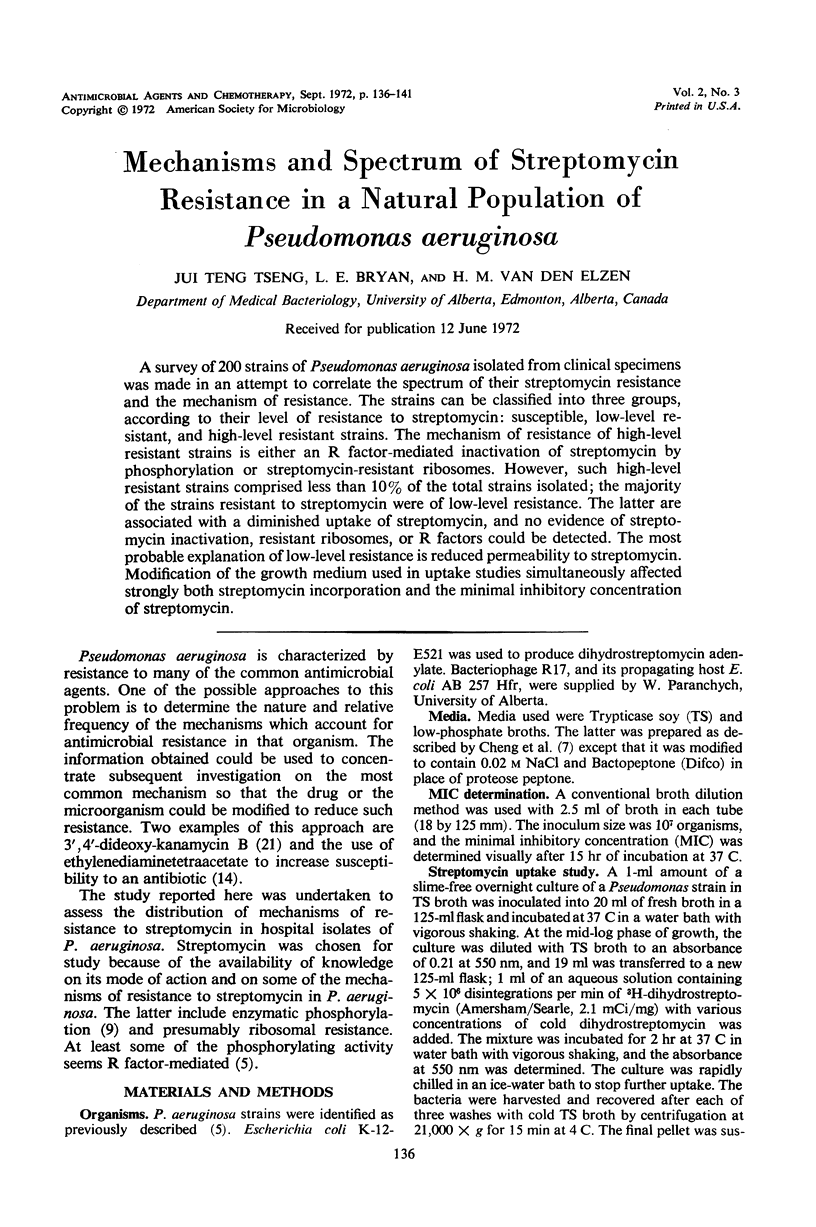
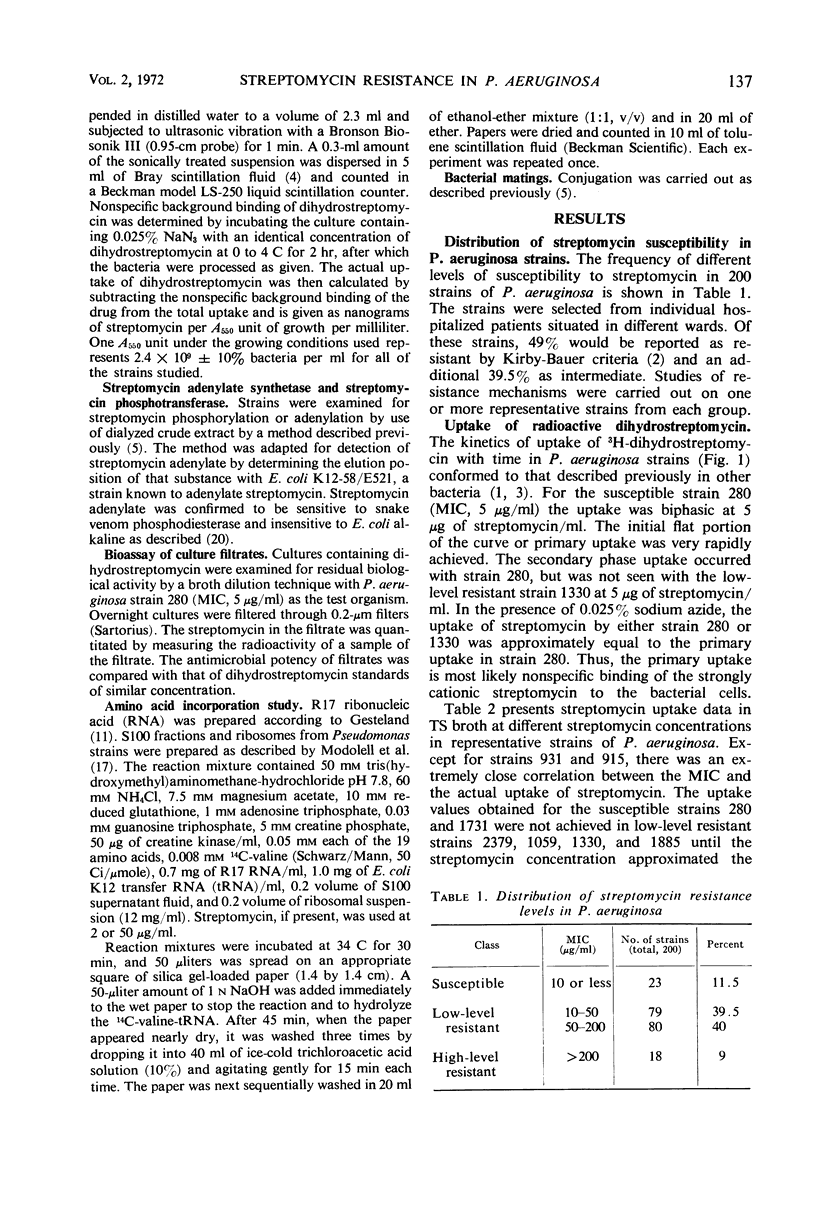
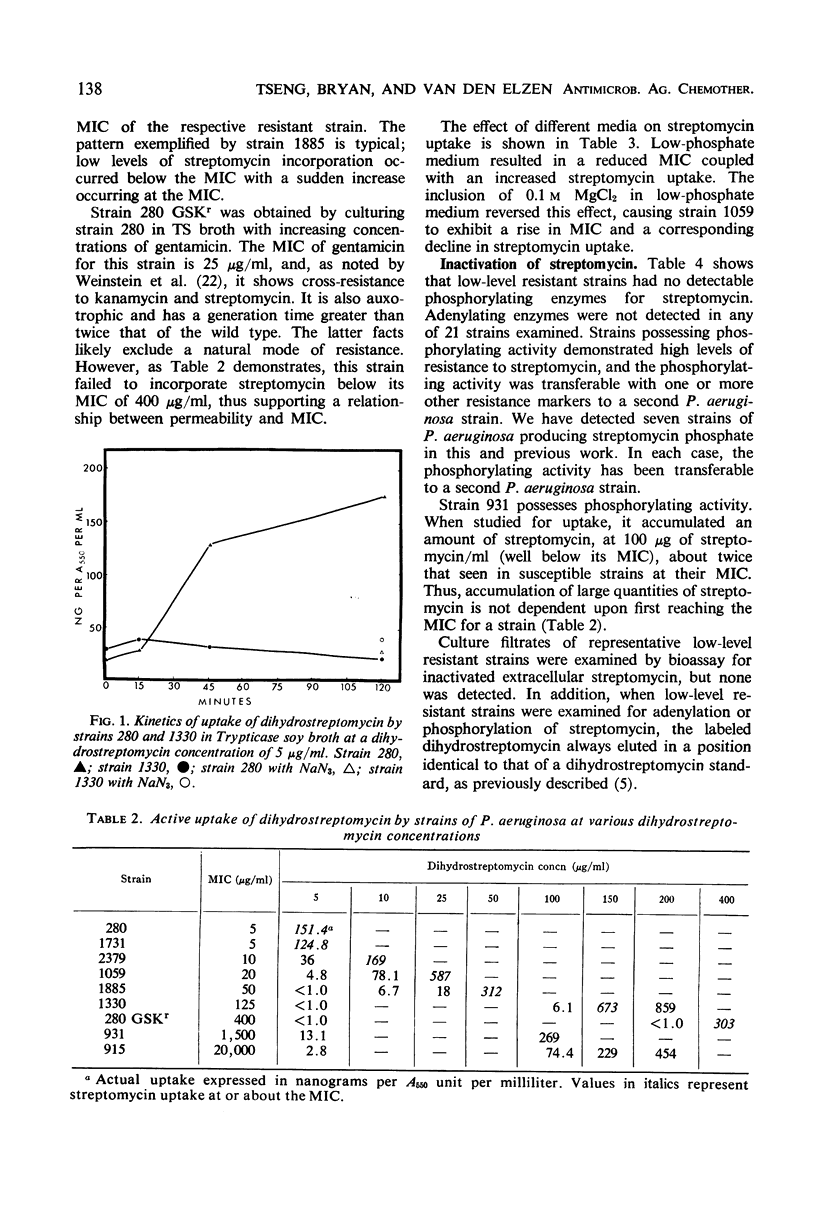
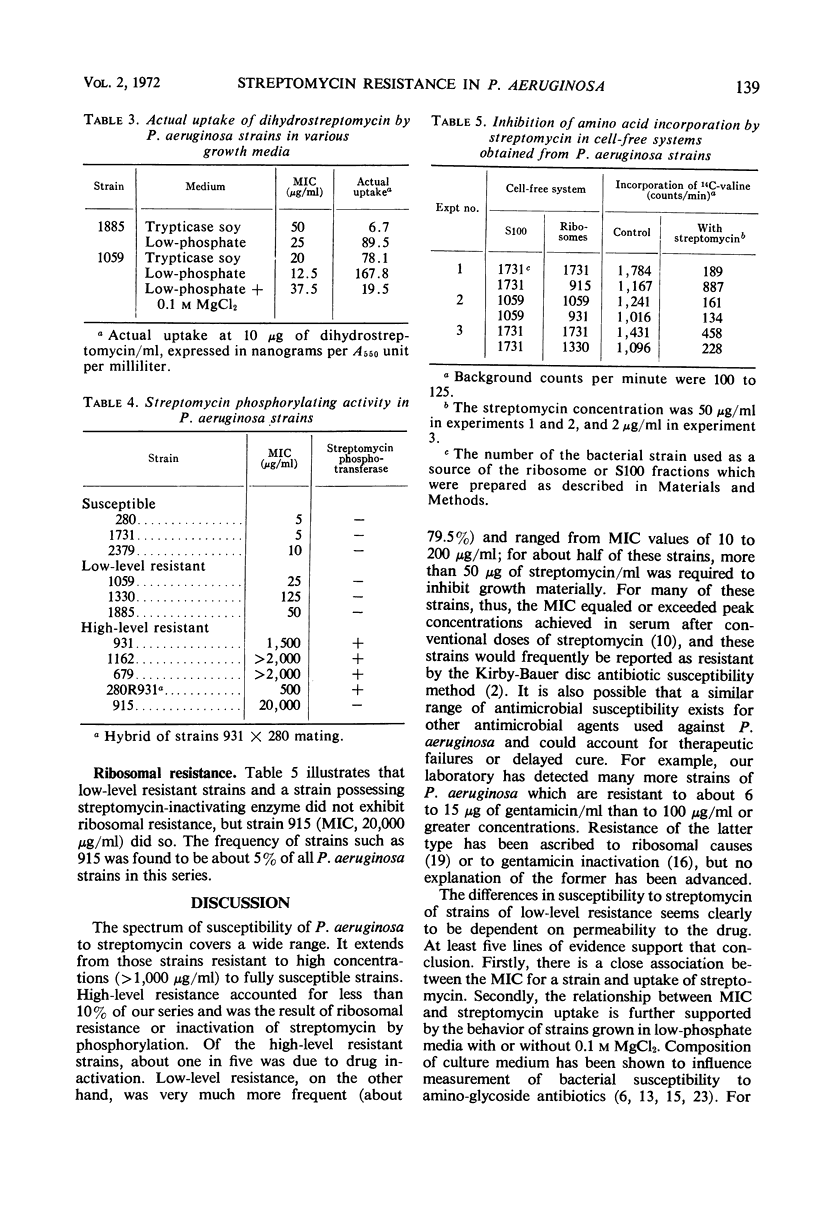
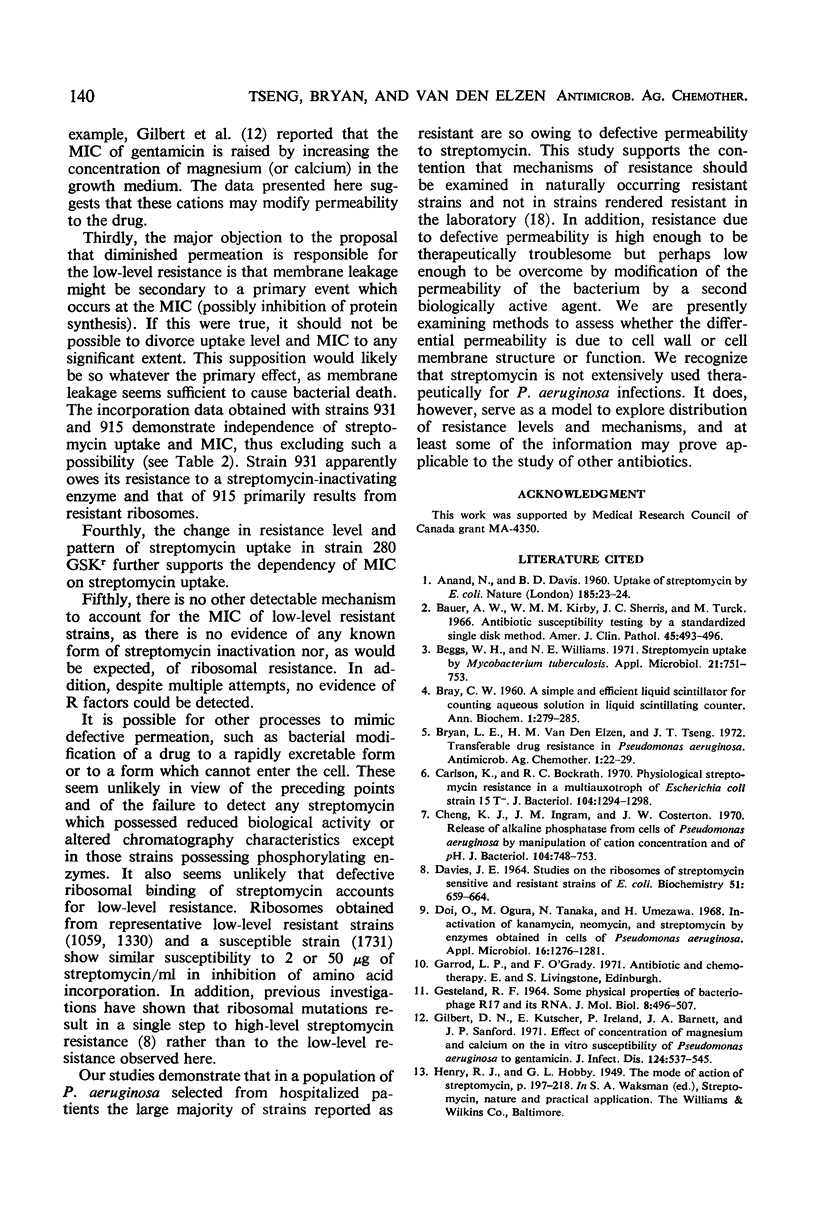
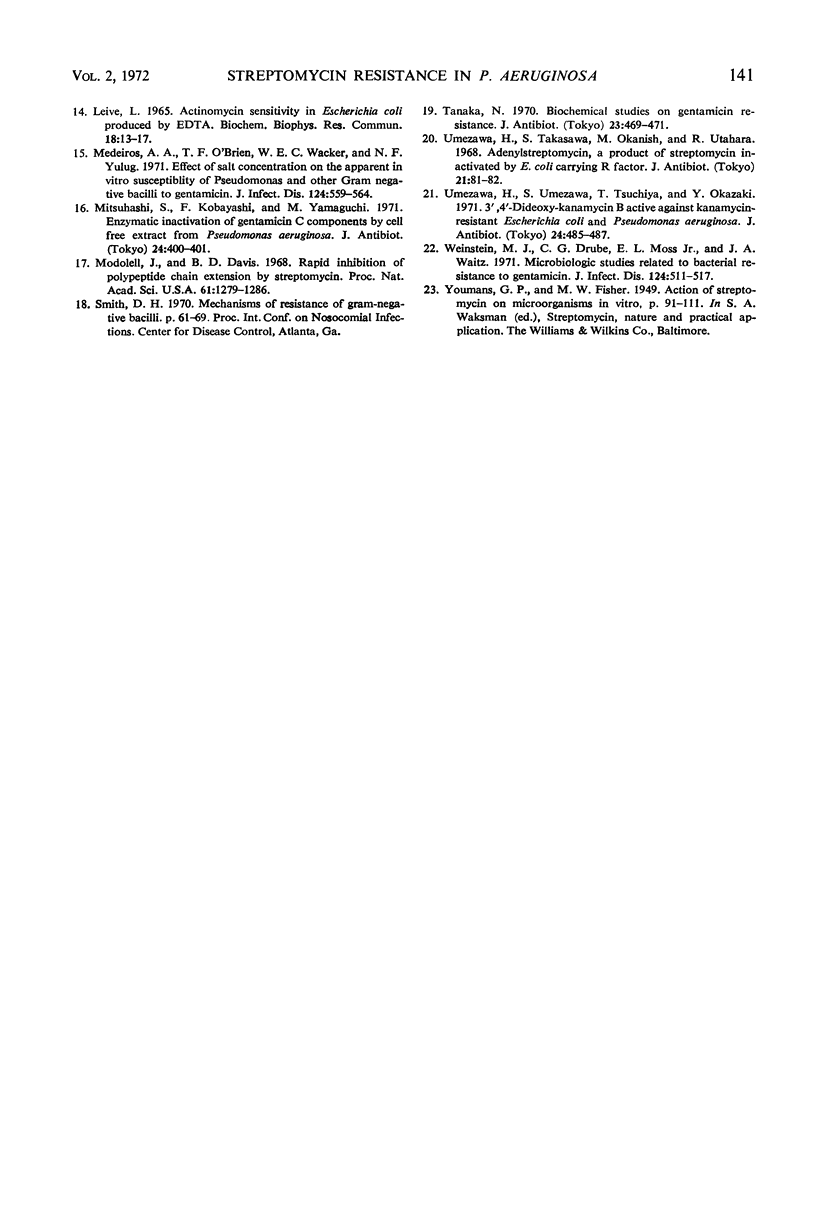
Selected References
These references are in PubMed. This may not be the complete list of references from this article.
- ANAND N., DAVIS B. D., ARMITAGE A. K. Uptake of streptomycin by Escherichia coli. Nature. 1960 Jan 2;185:23–24. doi: 10.1038/185023a0. [DOI] [PubMed] [Google Scholar]
- Bauer A. W., Kirby W. M., Sherris J. C., Turck M. Antibiotic susceptibility testing by a standardized single disk method. Am J Clin Pathol. 1966 Apr;45(4):493–496. [PubMed] [Google Scholar]
- Beggs W. H., Williams N. E. Streptomycin uptake by Mycobacterium tuberculosis. Appl Microbiol. 1971 Apr;21(4):751–753. doi: 10.1128/am.21.4.751-753.1971. [DOI] [PMC free article] [PubMed] [Google Scholar]
- Bryan L. E., Van Den Elzen H. M., Tseng J. T. Transferable drug resistance in Pseudomonas aeruginosa. Antimicrob Agents Chemother. 1972 Jan;1(1):22–29. doi: 10.1128/aac.1.1.22. [DOI] [PMC free article] [PubMed] [Google Scholar]
- Carlson K., Bockrath R. C. Physiological Streptomycin Resistance in a Multiauxotroph of Escherichia coli Strain 15 T. J Bacteriol. 1970 Dec;104(3):1294–1298. doi: 10.1128/jb.104.3.1294-1298.1970. [DOI] [PMC free article] [PubMed] [Google Scholar]
- Cheng K. J., Ingram J. M., Costerton J. W. Release of alkaline phosphatase from cells of Pseudomonas aeruginosa by manipulation of cation concentration and of pH. J Bacteriol. 1970 Nov;104(2):748–753. doi: 10.1128/jb.104.2.748-753.1970. [DOI] [PMC free article] [PubMed] [Google Scholar]
- DAVIES J. E. STUDIES ON THE RIBOSOMES OF STREPTOMYCIN-SENSITIVE AND RESISTANT STRAINS OF ESCHERICHIA COLI. Proc Natl Acad Sci U S A. 1964 Apr;51:659–664. doi: 10.1073/pnas.51.4.659. [DOI] [PMC free article] [PubMed] [Google Scholar]
- Doi O., Ogura M., Tanaka N., Umezawa H. Inactivation of kanamycin, neomycin, and streptomycin by enzymes obtained in cells of Pseudomonas aeruginoa. Appl Microbiol. 1968 Sep;16(9):1276–1281. doi: 10.1128/am.16.9.1276-1281.1968. [DOI] [PMC free article] [PubMed] [Google Scholar]
- GESTELAND R. F., BOEDTKER H. SOME PHYSICAL PROPERTIES OF BACTERIOPHAGE R17 AND ITS RIBONUCLEIC ACID. J Mol Biol. 1964 Apr;8:496–507. doi: 10.1016/s0022-2836(64)80007-3. [DOI] [PubMed] [Google Scholar]
- LEIVE L. ACTINOMYCIN SENSITIVITY IN ESCHERICHIA COLI PRODUCED BY EDTA. Biochem Biophys Res Commun. 1965 Jan 4;18:13–17. doi: 10.1016/0006-291x(65)90874-0. [DOI] [PubMed] [Google Scholar]
- Mitsuhashi S., Kobayashi F., Yamaguchi M. Enzymatic inactivation of gentamicin C components by cell-free extract from Pseudomonas aeruginosa. J Antibiot (Tokyo) 1971 Jun;24(6):400–401. doi: 10.7164/antibiotics.24.400. [DOI] [PubMed] [Google Scholar]
- Modolell J., Davis B. D. Rapid inhibition of polypeptide chain extension by streptomycin. Proc Natl Acad Sci U S A. 1968 Dec;61(4):1279–1286. doi: 10.1073/pnas.61.4.1279. [DOI] [PMC free article] [PubMed] [Google Scholar]
- Tanaka N. Biochemical studies on gentamicin resistance. J Antibiot (Tokyo) 1970 Sep;23(9):469–471. doi: 10.7164/antibiotics.23.469. [DOI] [PubMed] [Google Scholar]
- Umezawa H., Takasawa S., Okanishi M., Utahara R. Adenylylstreptomycin, a product of streptomycin inactivated by E. coli carrying R factor. J Antibiot (Tokyo) 1968 Jan;21(1):81–82. doi: 10.7164/antibiotics.21.81. [DOI] [PubMed] [Google Scholar]
- Umezawa H., Umezawa S., Tsuchiya T., Okazaki Y. 3',4'-dideoxy-kanamycin B active against kanamycin-resistant Escherichia coli and Pseudomonas aeruginosa. J Antibiot (Tokyo) 1971 Jul;24(7):485–487. doi: 10.7164/antibiotics.24.485. [DOI] [PubMed] [Google Scholar]


